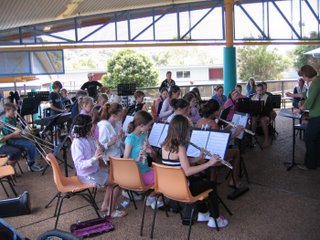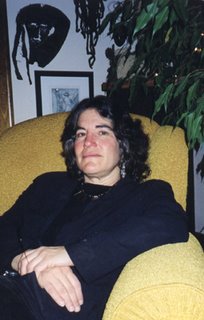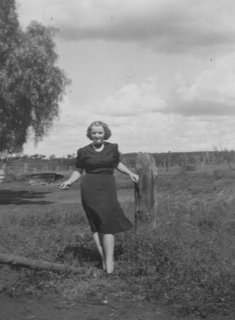
Lately I’ve been getting reacquainted with the music of The Cruel Sea, an Australian indie rock band fronted by vocalist Tex Perkins.
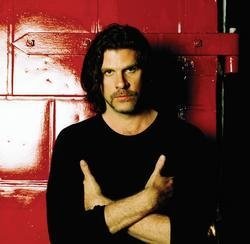
Formed in 1988, The Cruel Sea reached its commercial peak with the release of their 1993 album The Honeymoon is Over – an album that garnered three ARIA Awards.
I remember well “Black Stick”, the first single off the album, not only because it was a great song, but also because of its video which prominently featured a bare-chested Tex Perkins - described by one critic as “wolfish, raffish, [and] emanating the look of cool the word charismatic was invented for.”
I bought The Cruel Sea’s The Honeymoon is Over soon after its release, but because 1993 was my last year in Australia before relocating to the U.S., I never really had the time or inclination to get into it. And since I didn’t take the album with me to the U.S., The Cruel Sea and their music soon slipped off my radar.
Lately, though, I’ve been getting back into the band – not only by listening to The Honeymoon is Over, but also to a 1999 compilation album of the band’s greatest hits.
So what’s the music of The Cruel Sea like? Well, I think critic Amanda Brown hits the nail on the head when she relates the following:
“In 1970, whilst mulling over the idea of adolescence and rock & roll being relatively transitional periods in the grand scheme of life and music, rock critic Lester Bangs made what turned out to be an incredibly accurate prediction outlining the future of popular music. He hypothesised that there would be ‘a small island of new free music surrounded by some good reworkings of past idioms and a vast Sargasso sea of absolute garbage.’ The Cruel Sea are definitely on that island of new free music.”
In describing a live performance, another critic has observed that the band’s “rootsy soul captures a spirituality far beyond the narrow parameters of retro-posturing . . . Calypso, flamenco and reggae dissolve into raw country blues as the room lurches to [The Cruel Sea’s] heady aural cocktail”.
In a piece for Juice magazine, Clinton Walker praises the band’s “determined creativity”, noting that “songs are constructed with rhythms as a bedrock – the bottom-line in all music – around which the band swings with a crispness and dynamicism which is possible only due to their individual mastery, their whole empathy and their willingness to experiment”. Their songs, says Walker, are imbued “with a yearning for something, anything, which is fair and true rather than just skin deep”.
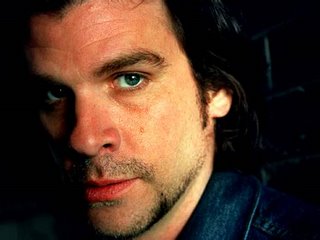
As far as I can gather, The Cruel Sea are no more – a fact that has given the band’s lead vocalist Tex Perkins the opportunity to work on various solo and collaborative projects. Recently, for instance, Perkins has teamed up with fellow Australian singer/songwriter Tim Rogers for a tour of the U.S. and Europe, and the recording of the 2006 album, My Better Half.
By chance I recently caught Tex on the cult SBS program, RocKquiz. He comes across as a very down-to-earth, genuine kind of guy. I also think it’s cool that two straight guys like Tex Perkins and Tim Rogers (T’n’T) are comfortable enough with their sexuality to release an album which not only permits their vocals to beautifully harmonize on songs like “Tonight’s the Night” and “Come On and Love Me”, but also sports a humorous cover image depicting the two men in bed together.

A comment left on one Internet site expressed the hope that this image indicates more than a musical collaboration between the two lads. Yet for those unfamiliar with Tim and Tex, any doubts concerning their heterosexuality are firmly (and humorously) dispelled by the album’s hidden closing track.
Reviewing the album, Peter Strelan notes that, “Perhaps the defining song on the record [. . .] is Perkins’ own song, ‘Half of Nothing’. At one level, the song is sincere and tender; on another level, it’s funny and that’s everything you need to know about the new record.”
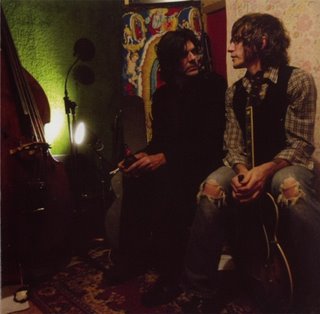
Tex apparently agrees: “That’s exactly how I see it!” he tells Strelan. “[Tim and I] have a lot of laughs, but the depth of our relationship is that we speak about things that are very tender and dear to us. We have a great ear for each other.”
See also the previous Wild Reed post:
A Fresh Take on Masculinity

